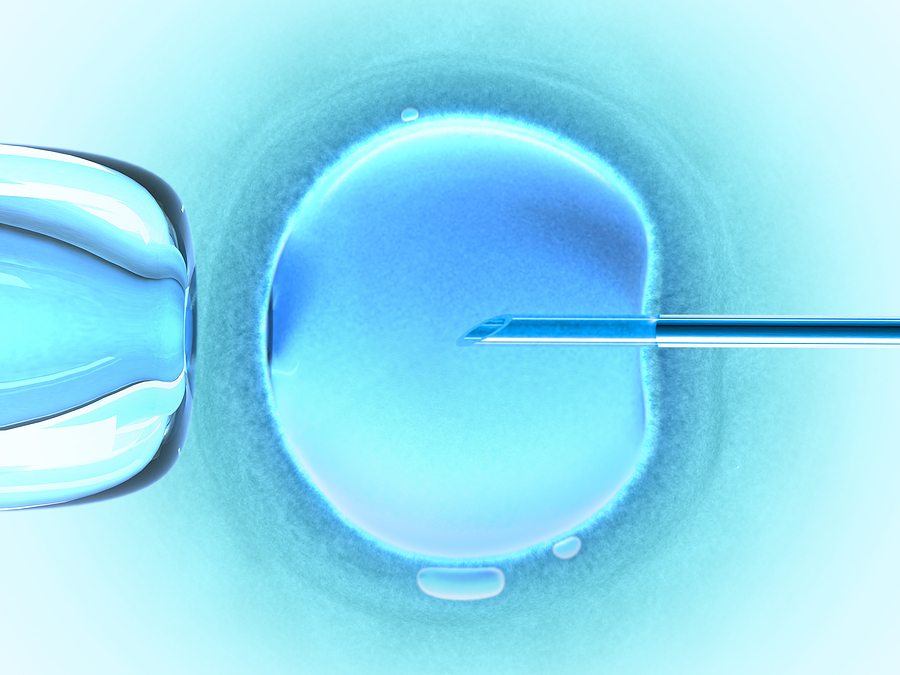IVF with Donor Sperm
In Vitro Fertilisation (IVF) is used by many single women, lesbian couples and heterosexual couples as a way to try to become pregnant.
This form of artificial insemination is often used when there is an identified infertility reason why the woman cannot become pregnant. For example it is common for males who suffer from low sperm count or poor sperm quality to have IVF with their partner. It is also more and more common for single women and lesbian couples to have IVF to become pregnant with donor sperm.
IVF is a very invasive procedure involving drugs to regulate the woman's menstrual cycle and follicle production and internal scans to carefully monitor egg production.
IVF with donor sperm has traditionally been used by heterosexual women whose partners are suffering from male infertility however it is increasingly common for single women and lesbian couples to use donor sperm with IVF to become pregnant.
Take me to:
What is IVF?
IVF stands for In Vitro Fertilisation and it is a technique that helps couples have a baby if they suffer from fertility issues. The process involves surgically removing an egg from the woman’s ovaries and fertilising it with a sperm in a laboratory. The fertilised egg forms and embryo which is then placed back into the woman’s womb to grow and develop.
In situations where the male sperm count is very low or there is poor morphology or motility a procedure called Intra-cytoplasmic sperm injection (ICSI) can be used. ICSI involves injecting a single sperm directly into an egg in order to fertilise it. The fertilised egg (embryo) can then be transferred to the woman’s womb.

How is IVF treatment performed?
You will be given fertility drugs to stimulate your ovaries which will help to develop several mature eggs. During a normal cycle you may only produce one egg so taking these fertility drugs will you increase your chances of becoming pregnant.
These drugs will essentially switch off your menstrual cycle in order for hormone injections to then stimulate ovulation. These hormone drugs can give some strong side effects so you will be closely monitored by the medical staff who are looking after your case. Your doctor will be able to detect when your eggs are mature and at this point they will be ready to be retrieved. This process involves you being given a sedation anaesthetic which makes you drowsy but still conscious to enable the doctor to remove your eggs. Dont worry you will not be able to feel or remember the procedure.
If you are a married heterosexual couple during this procedure your husband will be asked to give a fresh sperm sample. If you are a single woman or lesbian couple you will use frozen sperm. In both of these cases the sperm will be washed to extract the best quality sperm to fertilise the eggs. The sperm is then combined with the eggs and cultured in an incubator. These samples will be checked over the next few days to see if the eggs have been fertilised resulting in an embryo. Hopefully several of your eggs will have been fertilised leaving you with more than one embryo for future use. The healthiest embryo can then be inserted into your uterus.
After your eggs have been extracted you will take progesterone hormone which helps to thicken the lining of your uterus. The healthy embryos will then be transferred into your uterus using a thin catheter threaded through your cervix. Legally up to three embryos will be allowed to be implanted to prevent the risk of multiple pregnancy. The number implanted will depend on your ageand fertility condition.
Women aged under 40 can have a maximum of two embryos transferred to the womb however women over 40 can have three embryos per cycle due to a smaller chance of conceiving with their own eggs. For women using donated eggs only two can be transferred. If the cycle is successful one or more of the embryos will implant in your uterus and continue to grow. You will be asked to do a pregnancy test two weeks after the embryos have been transferred.
Will I be able to have IVF?
Many countries have age barriers to accessing IVF for example, in the UK the woman has to be between 23 and 39 years old at the time of treatment and have an identified fertility problem or have been trying unsuccessfully for a baby for at least three years.
In other countries around the world women are legally allowed to receive treatment into their 50's so research your clinics well before deciding where to go for your treatment.

Do I have to pay for IVF?
If you have access to a private health plan or you live in a country where IVF is part of the government health scheme you may be able to have your IVF treatment funded. In the UK the Primary Care Trusts decide who is eligible for funded fertility treatments. For most heterosexuals if you have identified fertility issues you will be entitled to up to three IVF cycles funded by the NHS.
If you have an unidentified fertility issue and have been unsuccessful in getting pregnant after trying for at least three years, as a heterosexual you will be entitled to up to three funded cycles of IVF but as a lesbian you would not be entitled to any funded treatment!
Costs for IVF treatment vary greatly around the world. You are about to spend a lot of money on this treatment so do your homework. Contact several clinics and ask them what their success rates are (age related) and what their fees are. It may be worth spending a little more money on a clinic that has much higher success rates.

What are the IVF success rates?
Success rates are often determined by the age of the woman at the time of treatment. As younger women tend to have healthier eggs their chances of success are increased.
Women under 35 have the highest chances of conceiving at around 29%, this reduces to 17% for 38-39 years old and 5% for women aged 43-44. You should check all of your local fertility clinic success rates and compare them thoroughly. Success rates are usually available on the fertility centres websites however you can request the most up-to-date.
It is really important to check IVF success rates because if the success rates are much higher at one clinic which is further away from where you live it may be worth the extra journey to go to the best clinic.
If you are a lesbian couple you should also ask if the clinic have dealt with same-sex couples before and what their success rates have been. Some clinics are not very good in dealing with lesbian couples and it’s important that you feel welcomed, relaxed and you are receiving the best care.
.jpg)
Related Articles:
Home Insemination
IUI
Natural Insemination